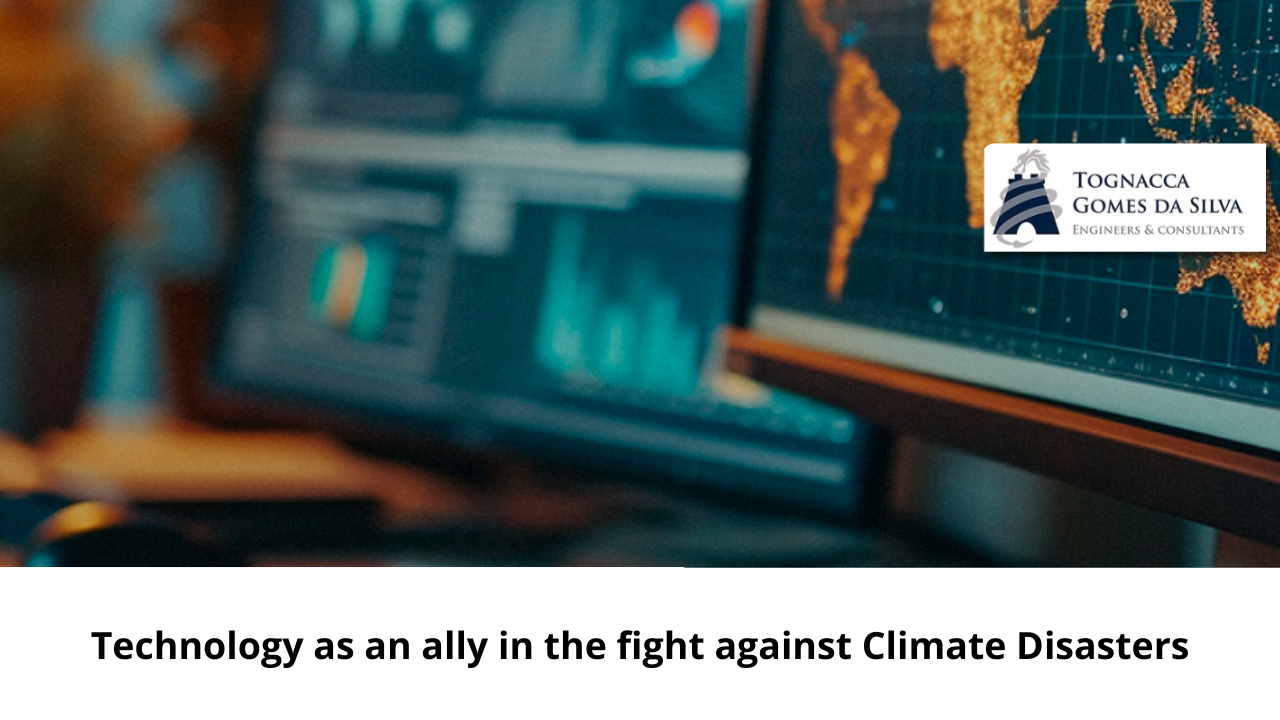The number of natural disasters, and consequently the number of people affected by them, has grown year by year. Data from the Digital Atlas of Natural Disasters from the Ministry of Integration and Regional Development show that, from 2019 to 2024, 20,110 disasters were recorded and far beyond the financial loss of around 227 billion reais, the lives of more than 100 million of people were affected, with 2.65 million people displaced or homeless, in addition to the loss of 1,290 lives. In 2024, we have already had major tragedies such as the floods in Rio Grande do Sul – which had already experienced a similar situation in September 2023 –, in addition to the relentless drought in the Central-West and the worrying low levels of rivers in the North. Data like these expose the brutal reality of this environmental crisis, requiring both prevention and environmental precaution, aiming to eliminate or at least mitigate these scenarios. Therefore, in this world on the brink of environmental collapse, where polluting gases saturate the atmosphere and extreme weather events become increasingly frequent, technology can be a fundamental partner in facing these challenges. Let’s address some solutions that are already being used to improve our coexistence with the environment.
Technological and global effort to reduce methane emissions
One of the biggest villains when we talk about the environment and climate change are greenhouse gas emissions. These gases, particularly methane, pose invisible but powerful threats that alter the planet’s delicate balance. Methane, with a significant part of its emissions attributed to human activity, requires special attention.
One of the most promising technological innovations in this fight is the use of satellites to detect and monitor these emissions. The MethaneSAT project, for example, is equipped with an advanced spectrometer that will allow the precise identification of the sources of this gas emission, facilitating the implementation of more effective mitigation strategies. Through continuous and detailed monitoring, it will be possible to identify leaks and previously unknown emission sources, allowing for rapid and targeted interventions.
In addition to detecting and monitoring, it is crucial to capture and utilize methane before it enters the atmosphere. Methane capture and utilization (MCU) technologies are being developed and improved for this purpose. These technologies involve capturing methane in places such as landfills and sewage treatment facilities, where it can be converted into energy or used as a feedstock for chemicals, reducing the amount of methane released into the atmosphere.
Artificial Intelligence: the new line of defense against natural disasters
The combination of Artificial Intelligence (AI) models, edge computing and a climate mission is generating a variety of useful applications. This triad has been used to provide more accurate forecasts and early warning systems, mitigating damage caused by hurricanes, fires and floods.
In the agricultural sector, which is one of the largest sources of methane emissions, Artificial Intelligence, Big Data and smart sensors are also being used to address methane emissions. AI systems can analyze vast amounts of sensor data and predict where and when methane emissions are most likely to occur. AI also helps monitor and prevent emissions from enteric fermentation in livestock and manure management, helping to implement more sustainable agricultural practices.
Local communities also have an important role in responding to climate change. Researchers at Northwestern University and Argonne National Laboratory have released Waggle devices, an open-source platform that combines modular sensors with local processing power to analyze data in real time before sending it to the cloud.
The platform, designed to be resilient, allows data collection even when the internet connection is interrupted, ensuring security and efficient management of the collected databases. The Sage platform, an evolution of Waggle, incorporates a software-defined sensor network to support Artificial Intelligence at the edge. The Sage network allows scientists to develop and deploy new AI models directly to sensors for a variety of purposes, from environmental monitoring to anomaly detection.
In Chicago, the Waggle-Sage platform is being used to monitor heat waves and other local climate impacts. Sensors installed on streetlights and buildings collect micro-local data on temperature and humidity, providing valuable insights to mitigate the effects of excessive heat in urban areas. The war against climate change is a fight that requires more than technological advances. It demands global collaboration, uniting governments, companies, NGOs and citizens in a joint effort. AI, science and ancestral knowledge are powerful weapons, but true victory depends on collective action and the determination to build a more sustainable and resilient future for generations to come. Together, we have the ability to face these challenges and ensure humanity’s survival on a prosperous planet.
It’s just the beginning, and it can’t stop.
Mitigation of natural disasters requires a combination of technological advances, sustainable practices and robust policies. With the increasing frequency and severity of these events due to climate change, such measures are crucial for environmental protection and the safety of affected populations. Implementing regulations that limit methane emissions, along with incentives for sustainable practices and effective monitoring programs, is critical. International organizations, such as the UN and the World Meteorological Organization (WMO), play a central role in coordinating global efforts and defining standards and guidelines for reducing methane emissions. Technology, as a powerful tool, plays a crucial role in identifying risk areas, monitoring emissions and optimizing mitigation strategies. By combining technological advances, sustainable practices and effective policies, we can build a more resilient and secure future for future generations.
( fonte: MIT Technology Review Brasil )



